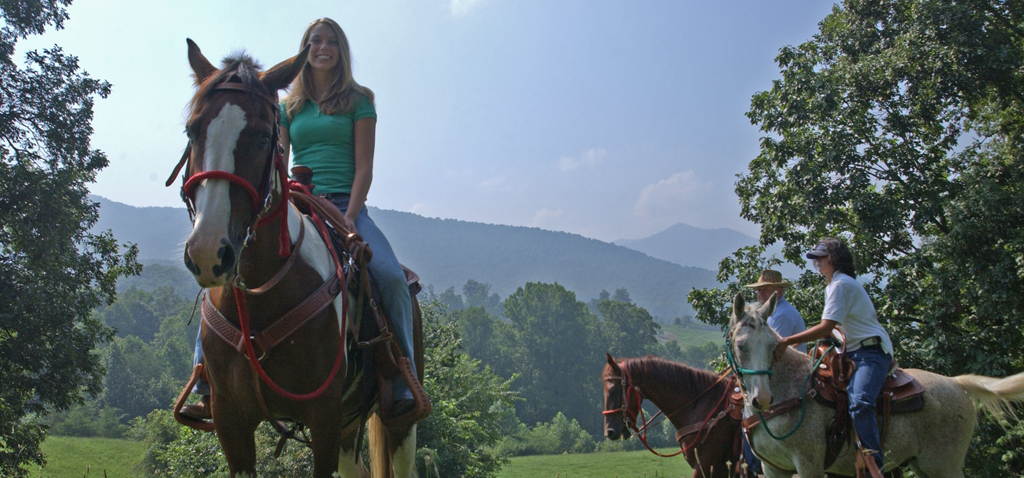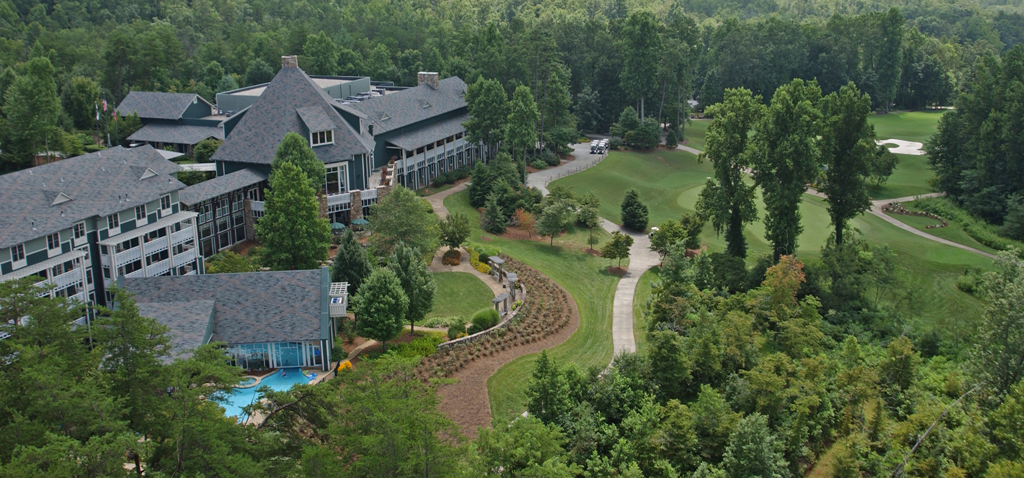

“A Picture Unsurpassed” is a historical display installment located on the lower level. It includes findings and information from the archaeological excavations and the Native American landscape of Brasstown Valley Resort.
The natural beauty and bounty of Brasstown Valley have been recognized for centuries. Before the arrival of European and African-American settlers, Brasstown Valley was home to Native Americans. From the hunter-gatherers of the Archaic Period, some 9,000 years ago, to the village societies of the Woodland and Mississippian Periods, to historic Cherokee farmsteads, Brasstown Valley was an important center for Native American life in the Blue Ridge Mountains. This archaeological legacy was recognized by the Georgia Department of Natural Resources in planning the Brasstown Valley Resort & Spa and recorded the presence of numerous archaeological sites.
The archaeological study made use of machine stripping to expose 24,000 square meters (nearly five acres, the largest area archaeologically examined in the Blue Ridge Mountains). More than 11,500 soil stains representing post holes, trash pits, storage structures, hearths, and other features were identified. These included the locations of Native American burials. Resort plans were redesigned to preserve them in place. The excavations revealed that during the Early and Middle Woodland Periods (3,000-1,500 years Before Present [BP]) people lived in small houses spread across the valley. Recovered plant remains included locally gathered wild plants, as well as possible cultivated plants, such as sunflower and may grass, suggesting the developing stages of agriculture in the valley.
By the late Woodland and Early Mississippian Periods (1,500-800 BP), the valley supported a year-round population employing maize agriculture as its primary means of support. Villages were protected by wooden palisade walls, suggesting at least sporadic warfare or hostilities with Native American groups from other regions. People lived in small circular houses built in posts with wattle and daub walls (woven branches covered with mud).
By the time of the historic Cherokee occupation (400-200 BP), the valley supported a number of dispersed farmsteads. These settlements consisted of a sturdy square winter house with narrow corner entries and central cooking hearths, small and airy rectangular summer houses, and small circular corn bins. The house yard of the Cherokee farmstead included: storage pits in which food crops were stored, roasting pits, work areas where pottery was made and fired, tools were fashioned, animals butchered, flour ground, and hides prepared, and family graves. Family graves and fenced enclosures for horses, cattle, and chicken lay immediately beyond the house complex. These traits suggest a continuation of cultural practices archaeologically interpreted for early Mississippian sites along the Blue Ridge.
Contact with the European settlers brought trade goods, and European-made objects were found alongside the broken pottery and projectile points of Brasstown Valley’s Cherokee inhabitants. The presence of several buttons suggests the use of European-style clothing, while a gunflint and lead shot demonstrate the arrival of firearms within the Cherokee community, both important changes in the Cherokee way of life.
As you leave the Lodge for a round of golf or walk along one of the resort’s many trails, enjoy the view of the valley. Imagine the fields of corn waving in the breeze, a woman making pottery in the cool of the morning, or the smoke rising from the roof of a Cherokee winter house, and reflect upon the beauty of Brasstown Valley then and now, a “Picture Unsurpassed”.

Preserving Cultural Resources
The Georgia Department of Natural Resources sought to develop Brasstown Valley Resort & Spa without adversely affecting the site’s cultural resources. Prehistoric and historic archaeological sites within resort boundaries were identified by intensive archaeological survey. Resort designers avoided sites so that they would be preserved with no impact from resort development.
The Georgia Department of Natural Resources worked with the Eastern Band of Cherokees to ensure that the excavation of archaeological sites was carried out in a manner that was sensitive to Native American traditions and values. Historic artifacts were found such as types of stamped Indian pottery along with the Brasstown Creek sites and where sites could not be avoided; significant scientific information was recovered by large-scale archaeological excavation.
The Georgia Department of Natural Resources has attempted, in every aspect of its continuous development of the Brasstown Valley Resort & Spa, to exercise responsibility and sensitive stewardship of an area with significant historic importance to the citizens of this state.
During the entire course of the archaeological investigations, the area was constantly patrolled by the Georgia Department of Natural Resources enforcement personnel to ensure that the excavations were not disturbed or vandalized. Ultimately, no burials were excavated or disturbed by the archaeological work.

Brasstown Valley Resort was founded in 1995 with a goal of a steadfast commitment to protecting the fragile ecosystem surrounding its 503-acre site.
Throughout the two-year development process, both construction and development teams strictly adhered to a daily Resource Components Protection Plan. Issues carefully considered included preservation of mountain cove wetlands, flood plains, significant archaeological sites, protected trout streams and animal habitats.
Our project team worked successfully with the state archaeologist, Georgia Council on American Indian Concerns, Wildlife Resources Division, TVA, U.S. Fish and Wildlife Services, Corps of Engineers, and others.
Brasstown Valley Resort & Spa is a place where nature and recreation complement each other in a unique mountain environment. Enjoy your time!